Inherent mosaicism and extensive mutation of human placentas
- PMID: 33692543
- PMCID: PMC7611644
- DOI: 10.1038/s41586-021-03345-1
Inherent mosaicism and extensive mutation of human placentas
Erratum in
-
Author Correction: Inherent mosaicism and extensive mutation of human placentas.Nature. 2022 Mar;603(7901):E17. doi: 10.1038/s41586-021-04347-9. Nature. 2022. PMID: 35228729 No abstract available.
Abstract
Placentas can exhibit chromosomal aberrations that are absent from the fetus1. The basis of this genetic segregation, which is known as confined placental mosaicism, remains unknown. Here we investigated the phylogeny of human placental cells as reconstructed from somatic mutations, using whole-genome sequencing of 86 bulk placental samples (with a median weight of 28 mg) and of 106 microdissections of placental tissue. We found that every bulk placental sample represents a clonal expansion that is genetically distinct, and exhibits a genomic landscape akin to that of childhood cancer in terms of mutation burden and mutational imprints. To our knowledge, unlike any other healthy human tissue studied so far, the placental genomes often contained changes in copy number. We reconstructed phylogenetic relationships between tissues from the same pregnancy, which revealed that developmental bottlenecks genetically isolate placental tissues by separating trophectodermal lineages from lineages derived from the inner cell mass. Notably, there were some cases with full segregation-within a few cell divisions of the zygote-of placental lineages and lineages derived from the inner cell mass. Such early embryonic bottlenecks may enable the normalization of zygotic aneuploidy. We observed direct evidence for this in a case of mosaic trisomic rescue. Our findings reveal extensive mutagenesis in placental tissues and suggest that mosaicism is a typical feature of placental development.
Conflict of interest statement
No competing interests are declared by the authors of this study.
Figures

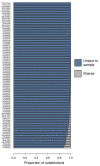
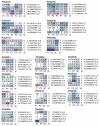
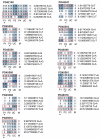
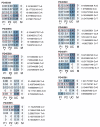

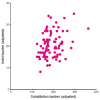


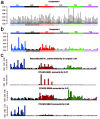

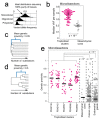

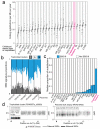
Similar articles
-
Preimplantation chromosomal mosaics, chimaeras and confined placental mosaicism.Reprod Fertil. 2022 Apr 5;3(2):R66-R90. doi: 10.1530/RAF-21-0095. eCollection 2022 Apr 1. Reprod Fertil. 2022. PMID: 35514539 Free PMC article. Review.
-
Unexpected finding of uniparental disomy mosaicism in term placentas: Is it a common feature in trisomic placentas?Prenat Diagn. 2018 Nov;38(12):911-919. doi: 10.1002/pd.5354. Epub 2018 Sep 27. Prenat Diagn. 2018. PMID: 30187503 Free PMC article.
-
Uniparental disomy for chromosome 16 in humans.Am J Hum Genet. 1993 Jan;52(1):8-16. Am J Hum Genet. 1993. PMID: 8434609 Free PMC article.
-
Confined placental mosaicism.J Med Genet. 1996 Jul;33(7):529-33. doi: 10.1136/jmg.33.7.529. J Med Genet. 1996. PMID: 8818935 Free PMC article. Review.
-
Prevalence of mosaicism in uncultured chorionic villus samples after chromosomal microarray and clinical outcome in pregnancies affected by confined placental mosaicism.Prenat Diagn. 2020 Jan;40(2):244-259. doi: 10.1002/pd.5584. Epub 2019 Nov 26. Prenat Diagn. 2020. PMID: 31769052
Cited by
-
On the reproductive capabilities of aneuploid human preimplantation embryos.Am J Hum Genet. 2022 Sep 1;109(9):1572-1581. doi: 10.1016/j.ajhg.2022.07.009. Am J Hum Genet. 2022. PMID: 36055209 Free PMC article. Review.
-
Early embryonic mutations reveal dynamics of somatic and germ cell lineages in mice.Genome Res. 2022 May;32(5):945-955. doi: 10.1101/gr.276363.121. Epub 2022 May 9. Genome Res. 2022. PMID: 35534232 Free PMC article.
-
Asymmetric Contribution of Blastomere Lineages of First Division of the Zygote to Entire Human Body Using Post-Zygotic Variants.Tissue Eng Regen Med. 2022 Aug;19(4):809-821. doi: 10.1007/s13770-022-00443-7. Epub 2022 Apr 19. Tissue Eng Regen Med. 2022. PMID: 35438457 Free PMC article.
-
False-positives and false-negatives in non-invasive prenatal testing (NIPT): what can we learn from a meta-analyses on > 750,000 tests?Mol Cytogenet. 2022 Aug 19;15(1):36. doi: 10.1186/s13039-022-00612-2. Mol Cytogenet. 2022. PMID: 35986330 Free PMC article.
-
Pluripotency-independent induction of human trophoblast stem cells from fibroblasts.Nat Commun. 2023 Jun 8;14(1):3359. doi: 10.1038/s41467-023-39104-1. Nat Commun. 2023. PMID: 37291192 Free PMC article.
References
Publication types
MeSH terms
Grants and funding
LinkOut - more resources
Full Text Sources
Other Literature Sources
Molecular Biology Databases

